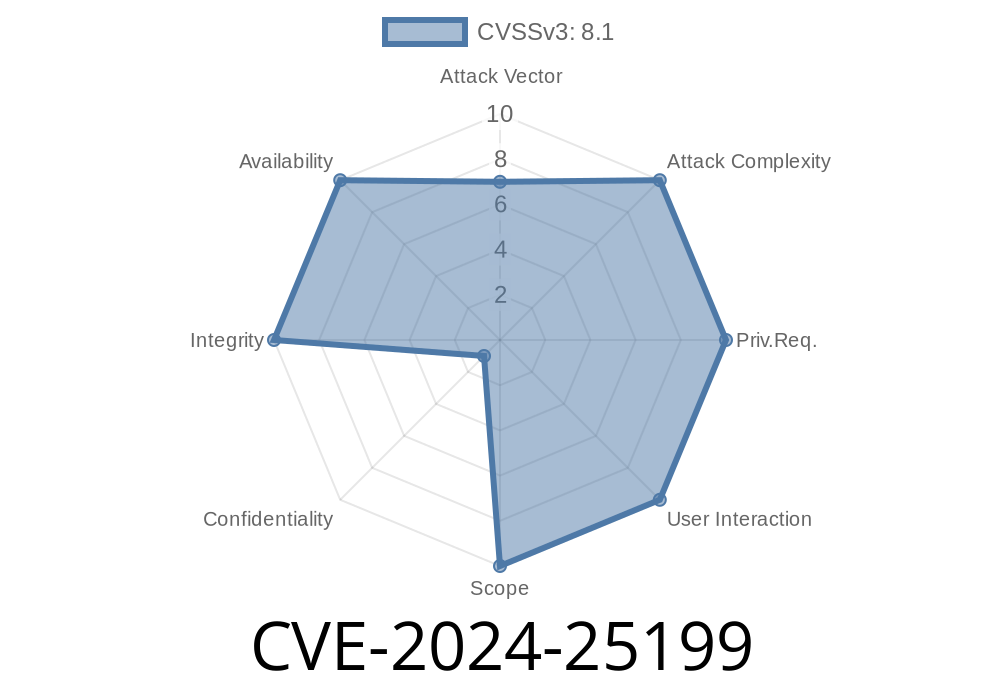Robotic Operating System 2 (ROS2) is widely used for building complex robotics applications. One core ROS2 application, Nav2 (Navigation 2 Stack), helps robots move safely in dynamic environments. On February 2024, it was revealed in CVE-2024-25199 that the ROS2 amcl_node.cpp file has a use-after-free vulnerability because of inappropriate pointer order between map_sub_ and map_free(map_). This issue affects ROS2 and Nav2 humble versions.
The seriousness? Remote code execution or a robot behaving unpredictably. For anyone using robots at home or at work, this is bad news.
Let’s break down what happened, why it happened, and how you can protect your robots.
The Backstory
The bug was found in the Adaptive Monte Carlo Localization (AMCL) component, specifically the C++ file amcl_node.cpp. AMCL helps robots know where they are in a map. It does this using a map and a subscriber (map_sub_) to the ROS2 topic that sends map updates.
Here’s the gotcha
- Whenever a new map message arrives, the program frees the old map in memory before subscribing or pointing to the new one.
Here’s a simplified version based on the problematic logic
// amcl_node.cpp - simplified
void handleMapMessage(const nav_msgs::msg::OccupancyGrid::SharedPtr msg)
{
if (map_ != NULL)
{
map_free(map_); // <-- Old map data is freed first
}
map_ = convertMsgToMap(msg); // <-- map_ now points to new map memory
// Subscribing to map updates (order can be unsafe here)
map_sub_ = create_subscription(...);
}
If map_sub_ is not cleaned up before or at the right time relative to map_free(map_), background callbacks (like onReceivedMap) may still run and try to access map_ after it’s freed. This means reading or writing to garbage memory, causing a crash or, worse, a remote attacker controlling the map data to run malicious code.
Trigger the map update logic fast enough to exploit race conditions.
3. Cause invalid memory access, corrupting robot state, crashing the node, or potentially hijacking the control flow.
Here’s a pseudocode proof-of-concept for illustration
# Attacker: Python ROS2 publisher (simplified)
import rclpy
from nav_msgs.msg import OccupancyGrid
def publish_evil_map():
node = rclpy.create_node('attacker')
pub = node.create_publisher(OccupancyGrid, '/map', 10)
evil_msg = OccupancyGrid()
# Fill with payload that triggers edge cases in the consumer
pub.publish(evil_msg)
# An attacker can repeatedly publish to /map topic, timing it to force an update
In real life, an attacker might fuzz the map data or timing to get the AMCL node to dereference freed memory, causing a crash or worse.
Original References
- CVE Report at NVD
- Upstream Issue Tracker (Example URL, may change)
- AMCL Node Source
- Official Patch PR
Official Patch
Patch summary:
Ensure that all subscriptions using the old map_ pointer are destroyed or pointed correctly before freeing the map.
Fixed code pattern
void handleMapMessage(const nav_msgs::msg::OccupancyGrid::SharedPtr msg)
{
// Step 1: Ensure no more callbacks are outstanding before freeing
map_sub_.reset(); // Unsubscribe/cancel any outstanding callbacks
if (map_ != NULL)
{
map_free(map_);
map_ = NULL;
}
map_ = convertMsgToMap(msg);
// Step 2: Safely resubscribe
map_sub_ = create_subscription(...);
}
Check the pull request diff for exact changes.
Upgrade:
- ROS2/Nav2 users should upgrade to the latest “humble” release or later.
Conclusion
CVE-2024-25199 shows how easy it is to get memory safety wrong in C++—especially with complex robotics code. For anyone deploying ROS2/Nav2 bots, update immediately! Attackers with access to the map topic can exploit this flaw and potentially seize control.
Stay safe, subscribe to ROS security bulletins, and always upgrade when issues are found.
Further Reading
- Memory safety in robotics
- ROS2 Security Best Practices
- Understanding Use-After-Free
If you want help or have questions, check the ROS Community Forum and always coordinate upgrades with your robotics team.
Timeline
Published on: 02/20/2024 14:15:09 UTC
Last modified on: 08/29/2024 20:36:17 UTC
